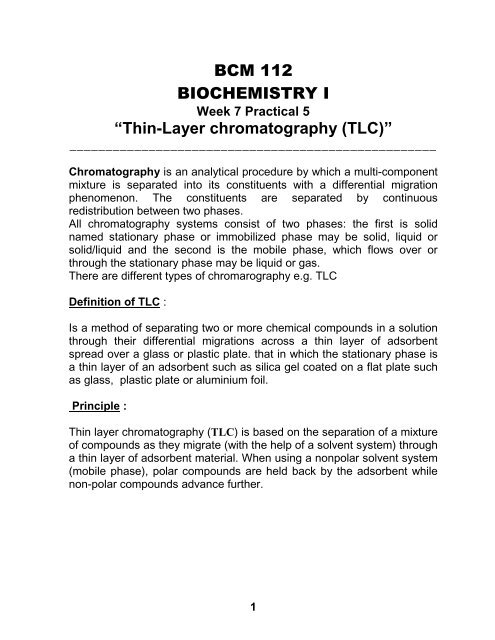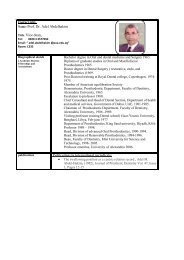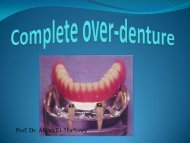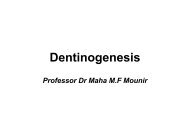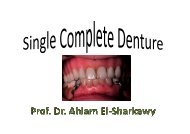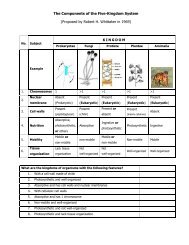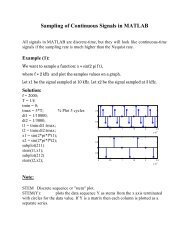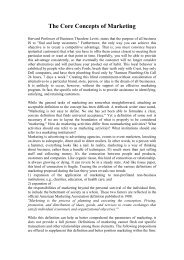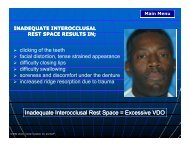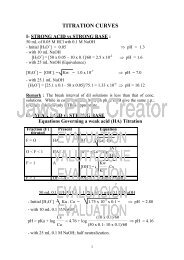BCM 112 BIOCHEMISTRY I âThin-Layer chromatography (TLC)â
BCM 112 BIOCHEMISTRY I âThin-Layer chromatography (TLC)â
BCM 112 BIOCHEMISTRY I âThin-Layer chromatography (TLC)â
Create successful ePaper yourself
Turn your PDF publications into a flip-book with our unique Google optimized e-Paper software.
<strong>BCM</strong> <strong>112</strong><br />
<strong>BIOCHEMISTRY</strong> I<br />
Week 7 Practical 5<br />
“Thin-<strong>Layer</strong> <strong>chromatography</strong> (<strong>TLC</strong>)”<br />
___________________________________________________<br />
Chromatography is an analytical procedure by which a multi-component<br />
mixture is separated into its constituents with a differential migration<br />
phenomenon. The constituents are separated by continuous<br />
redistribution between two phases.<br />
All <strong>chromatography</strong> systems consist of two phases: the first is solid<br />
named stationary phase or immobilized phase may be solid, liquid or<br />
solid/liquid and the second is the mobile phase, which flows over or<br />
through the stationary phase may be liquid or gas.<br />
There are different types of chromarography e.g. <strong>TLC</strong><br />
Definition of <strong>TLC</strong> :<br />
Is a method of separating two or more chemical compounds in a solution<br />
through their differential migrations across a thin layer of adsorbent<br />
spread over a glass or plastic plate. that in which the stationary phase is<br />
a thin layer of an adsorbent such as silica gel coated on a flat plate such<br />
as glass, plastic plate or aluminium foil.<br />
Principle :<br />
Thin layer <strong>chromatography</strong> (<strong>TLC</strong>) is based on the separation of a mixture<br />
of compounds as they migrate (with the help of a solvent system) through<br />
a thin layer of adsorbent material. When using a nonpolar solvent system<br />
(mobile phase), polar compounds are held back by the adsorbent while<br />
non-polar compounds advance further.<br />
1
Procedure :<br />
1. With your pencil, draw a line about 1 cm from the bottom edge of a<br />
silica gel <strong>chromatography</strong> sheet.<br />
2. On this line, apply 2 spots: the first for the lipid mixture and the second<br />
for cholesterol as a reference. N.B. mark with your pencil “M” for the<br />
mixture and “C” for cholesterol.<br />
3. Put the <strong>TLC</strong> sheet vertically in a beaker containing 10 ml of a nonpolar<br />
solvent system composed of petroleum ether : diethylether : glacial<br />
acetic acid (70:30:1).<br />
4. Cover the beaker immediately with aluminium foil.<br />
5. Allow the solvent to rise to the appropriate level (about 1 cm from the<br />
upper end of the sheet).<br />
2
6. Remove the <strong>TLC</strong> sheet from the beaker and immediately draw a line<br />
with your pencil at the front line (level reached by the solvent).<br />
7. Allow the solvent to evaporate and place the <strong>TLC</strong> sheet vertically in<br />
another beaker containing few<br />
crystals of iodine; cover the beaker<br />
with a watch glass, iodine will<br />
sublime and colorize the lipid spots<br />
with a yellow color.<br />
8. Remove the <strong>TLC</strong> sheet and<br />
encircle spots with a pencil.<br />
9. Record the Retention Factor (R f )<br />
value for each spot. R f values are<br />
numbers between zero and one, representing the position of the spot on<br />
the <strong>TLC</strong> plate.<br />
Calculating Retention Factors (R f ) for Thin <strong>Layer</strong> Chromatography:<br />
R f values are numbers between zero and one, representing the position<br />
of the spot on the <strong>TLC</strong> plate.<br />
distance traveled by the spot<br />
Rf = _______________________________________<br />
distance traveled by the solvent<br />
• Note that if the lipid mixture contains cholesterol, a spot with the<br />
same Rf value of reference cholesterol is obtained.<br />
• Comment on the polarity of compounds in the separated spots.<br />
3
Application and importance of Thin-<strong>Layer</strong> Chromatography In<br />
Clinical Chemistry :<br />
1. Lipid analysis, separation of different lipid classes from animal and<br />
plant tissues;<br />
a- simple lipids i.e. cholesterol esters, triglycerides, free fatty<br />
acids, cholesterol and diacylglycerols.<br />
b- Complex lipids such as phospholipids e.g. lecithin and<br />
sphingomyelin (a semiquantitative ratio of these compounds in<br />
amniotic fluid is widely used as an indicator of foetal lung maturity).<br />
2. Analytical <strong>TLC</strong> is used in drug analysis, in cases of acute poisoning<br />
3. Thin layer <strong>chromatography</strong> (<strong>TLC</strong>) is very useful to chemists as an<br />
analytical technique to separate and identify the compounds in a<br />
mixture.<br />
4. Detection of abnormal components in inborn errors of metabolism in<br />
the neonatal population e.g. inborn errors of carbohydrate metabolism.<br />
<strong>TLC</strong> has been used to detect the presence of abnormal sugars in<br />
blood, urine or faeces.<br />
5. Amino-aciduria can be investigated in urine to detect amino acids by<br />
using two dimensional <strong>TLC</strong> system.<br />
4
<strong>BCM</strong> <strong>112</strong><br />
<strong>BIOCHEMISTRY</strong> I<br />
Week 7 Practical 5<br />
“Thin-<strong>Layer</strong> Chromatography (<strong>TLC</strong>)”<br />
Student Name: …………………………………… Student number: ……………<br />
___________________________________________________________________<br />
Detection of cholesterol in a lipid mixture by <strong>TLC</strong>:<br />
Rf value of cholesterol spot = ………………………………………………<br />
Does the mixture contain cholesterol ? ……………………………………<br />
5


